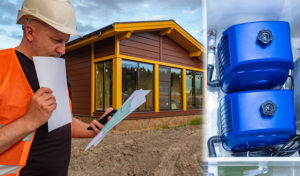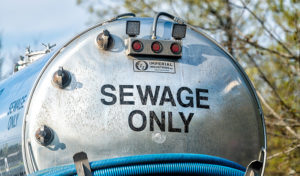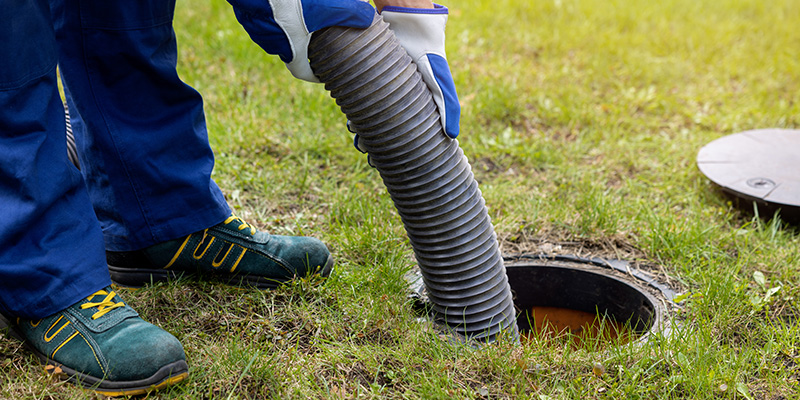As a landlord, it is part of your job to make sure that everything in your rental property works smoothly. This includes your septic system. Here is everything you need to know about septic tank maintenance for rentals.
The Importance of Septic Tank Maintenance for Rentals
A septic system is an underground structure made for water waste treatment. While these are more typically seen in rural areas, they can also exist in rental properties. A septic system combines technology and nature to treat wastewater from household plumbing such as bathrooms, kitchens, and laundry areas.
Considering the function of a septic system, maintenance for them is a must. If you didn’t know, septic systems dispose of wastewater in an effective and efficient manner. Water and waste from the rental property drain through a pipe and go into a septic tank. It then passes through the system and into a drain field, which filters out into the soil.
Without proper maintenance, a septic tank may stop functioning as intended, leading to problems in managing waste and water. Untreated sewage may surface to the ground surrounding the tank. It could also find itself backed up in the pipes. Exposure to untreated sewage can cause a variety of diseases. If a tenant or guest falls ill, the landlord may be found liable because of improper maintenance.
Due to the complex nature of the system, though, many landlords can’t handle maintenance alone. More often than not, septic tank pumping for rental properties requires the assistance of a professional.
Common Problems With Septic Tanks
There are a handful of common issues that you may encounter with septic tanks. These are erroneous installation, blocked pipes, sewage tank leaks, increased water use, and even tree roots invading the pipes. Let’s break each one down further below.
 1. Erroneous Installation
1. Erroneous Installation
It goes without saying that septic systems, like any other structural system, should be installed correctly to function correctly. But, there are some cases wherein a home’s septic tank is installed erroneously.
The tank may have been installed too shallow or may have been the incorrect size. There is also the possibility of using the wrong kind of soil in the drain field. While they may seem small, these mistakes can cause failure in the septic system.
2. Blocked Pipes
Perhaps the most common issue with septic tanks is clogged pipes. When a septic tank becomes too full, you may experience slower drains. Sometimes, it could even lead to a backed-up toilet or sink. You must have your septic tank pumped out regularly.
Other times, a block in the pipes could be due to an object that was incorrectly flushed down the toilet. In this case, you will likely need a plumber to help unclog the pipes.
3. Sewage Tank Leaks
A leak in the sewage tank could push wastewater into your lawn. This is particularly dangerous to the health of your tenants and guests. Additionally, if you allow the leak to continue unresolved, it could result in long-term damage. A good sign that you have a leak in your sewage tank or lateral lines is when you have grass that’s too green without explanation as the leak could have oversaturated your lawn.
4. Increased Water Use
Septic tanks aren’t designed to hold an infinite amount of water. Over time, the tank will overflow. It will do so at a quicker rate, too, if you have a lot of tenants using the same system. Make sure your septic tank is large enough to accommodate the entire property. You may need to replace it with a bigger one to handle the increased water use.
5. Tree Roots Invading Pipes
Believe it or not, nature can get in the way of a well-functioning septic system. Tree roots can grow and impede the flow of your pipes, causing them to crack and become damaged. There are also some instances wherein roots end up clogging the pipes. Luckily, manufacturers have come up with plastic pipes that can specifically withstand invading tree roots.
If you don’t want to replace your pipes, you could try removing the source of the problem altogether. Of course, removing a tree doesn’t come free, and your tenants might not want the tree removed in the first place. Alternatively, you may want to treat your pipes with a root growth inhibitor. To avoid such problems in the future, consider carefully where you plant your trees to make sure they don’t end up interfering with your pipes.
Checklist for Septic Tank Maintenance for Rentals
Staying on top of your septic system is an absolute must. But, it can be easy to forget to do so when you’re managing different aspects of your rental property. To help you out, here is a checklist you should refer to for a healthy septic system:
- Conduct frequent inspections of your septic system.
- Schedule a septic tank pumping every two (2) years.
 Check for leaks and drips in your plumbing; repair them at once when identified.
Check for leaks and drips in your plumbing; repair them at once when identified.- Inspect your lawn regularly and look out for oversaturated turf or spongy grass.
- Don’t throw away cooking oil and grease in your drains or garbage disposal.
- Never flush objects down your toilet.
- Plant trees away from your septic system.
- Use a root growth inhibitor on your pipes.
- Properly dispose of household chemicals.
- Conserve water where you can and remind your tenants to do the same.
Following this checklist can help any landlord ensure the health of their septic system. With a faulty septic system, everyone suffers. Your tenants may not be able to use the plumbing properly, and exposure to the wastewater can lead to illnesses. Moreover, you end up incurring unnecessary expenses as a landlord.
Septic Tank Maintenance Costs
Maintaining your septic system isn’t always possible without the help of a trained professional. Most landlords, though, hold off on this all-too-important service because they don’t want the added expenses. But, delaying maintenance and repairs will only cost you more in the long run.
Septic tank cleaning for rental homes typically costs around $375, while inspections can cost a few hundred dollars. As for repairs, expect to shell out anywhere from $200 to $6,000 or more. Of course, the cost will ultimately depend on the level of damage present. For total replacements of septic tanks, expect to pay anywhere between $3,000 to $9,500.
As septic tank maintenance for rentals is imperative, make sure to set aside funds in your budget for it. It’s also a good idea to budget for emergency maintenance and repair costs.
Preventive Maintenance Is Key
Septic tank maintenance for rentals is not always easy. It requires discipline, as it’s not something you can just do every now and then. Monitoring your septic system is an ongoing job — one that usually requires expertise. But, by addressing minor issues quickly, you can avoid a costly total replacement of your septic tank.
Maintenance and repairs are often difficult to track and manage. Fortunately, property management companies can help landlords with this. Start browsing our online directory today and look for the best property management company in your area!
RELATED ARTICLES:
- The Ins And Outs Of Rental Property Maintenance and Repairs
- Is The Landlord Responsible For Tree Trimming?
- Water Damage In Apartments: Who’s Responsible For Fixing It?




 Company
Company